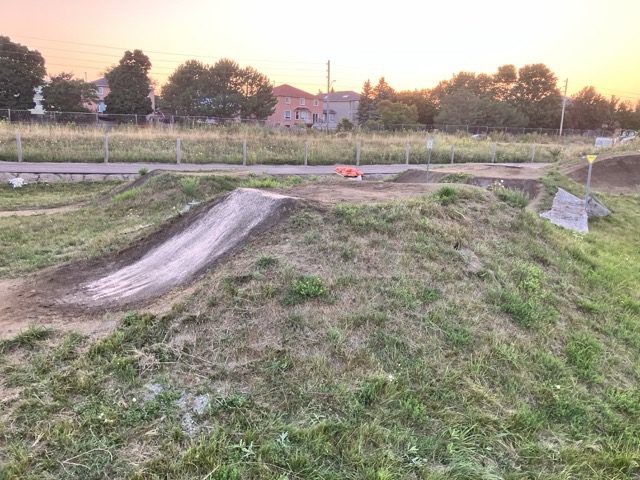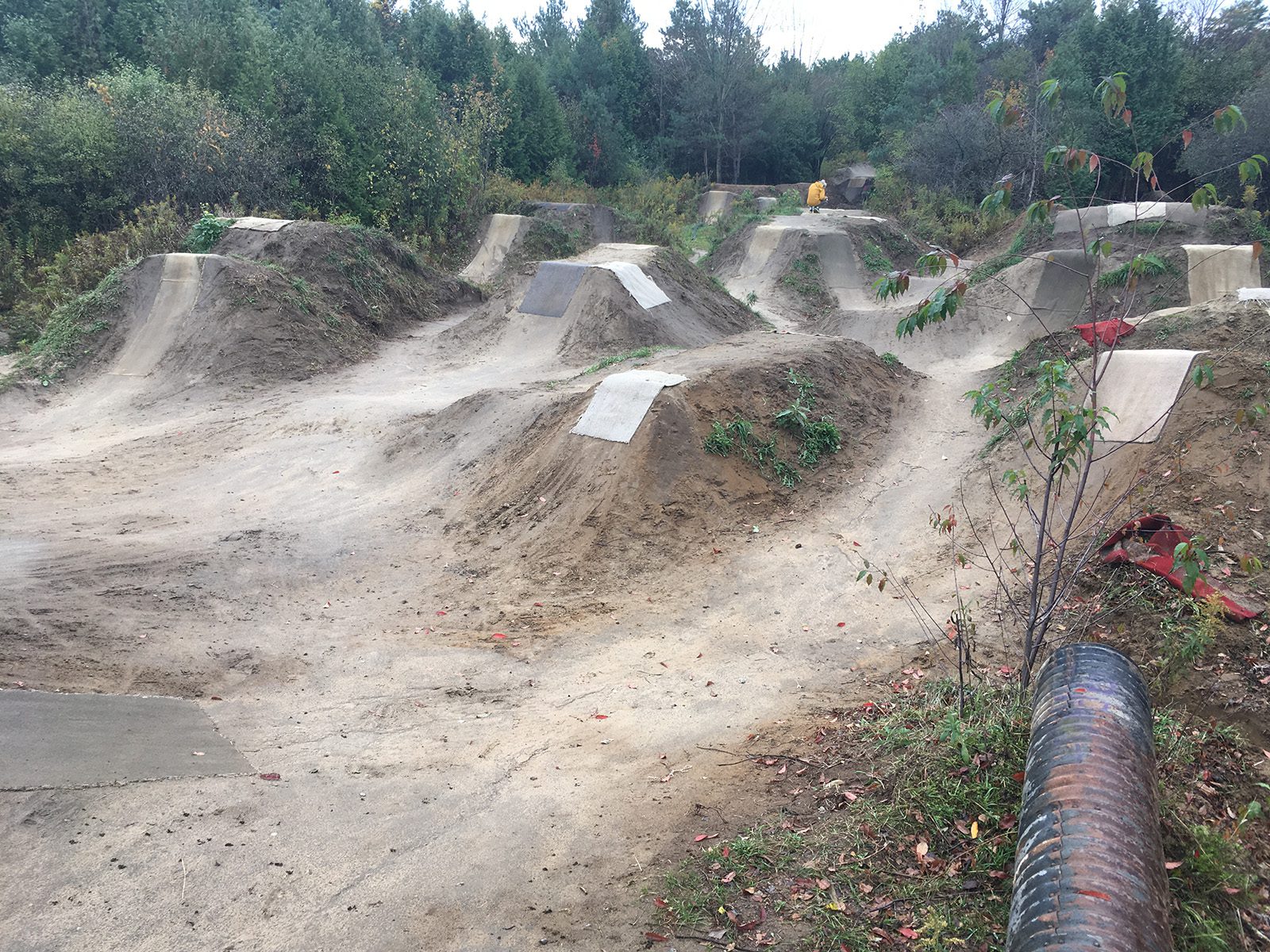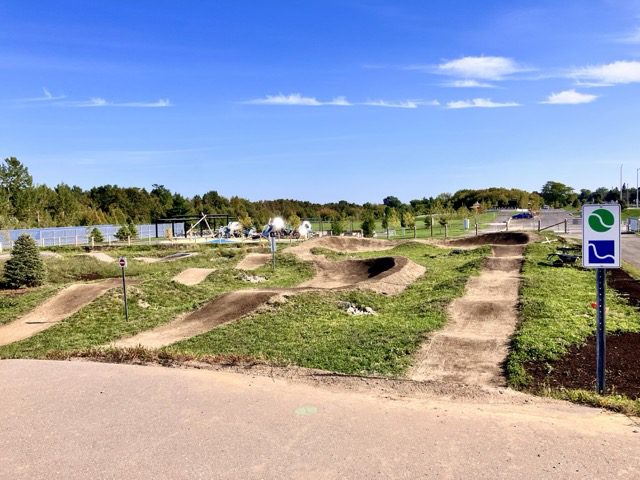Oshawa just wrapped construction on what appears to be Ontario’s largest publicly funded bike park. A sprawling new facility inside Rose Valley Community Park stacks three asphalt pump tracks beside a rebuilt dirt-jump zone and a dedicated mountain bike flow and skills area. The city’s grand opening is set for Oct. 4, but the place is already buzzing with kids, parents and everyone in between on bikes, boards and scooters.
“It’s honestly got to be Ontario’s largest bike park. I’m quite sure,” says Chris Dewar, owner of Transitions Bike Parks, who helped design the riding features and oversaw key construction milestones for the city. “The city of Oshawa really went all in and implemented this massive facility.”
What’s there
Dewar shared the area breakdown:
MTB flow line and skills area: 0.91 hectares (2.249 acres)
Asphalt pump tracks: 0.48 hectares (1.186 acres)
Dirt jump park: 0.35 hectares (0.865 acres)
That’s 4.300 acres of purpose-built riding space within a larger community park that also adds sports fields, trails, a playground, parking and a high-tech washroom facility. The full park project carries an estimated $9-million price tag.
 Chris Dewar photo.
Chris Dewar photo.
Three pump tracks, one accessible
Oshawa’s pump track offering covers the full spectrum.
“You have a wheelchair-accessible strider track, then you’ve got a separate intermediate pump track and then you’ve got a separate intermediate slash advanced pump track,” says Dewar. “So there’s three asphalt tracks there now.”
For riders who prefer dirt, the jump park spans beginner, intermediate and advanced lines.
“We brought it back to life,” says Dewar, describing Transition’s late-July push to uncover, reshape, compact and re-water the lines after two years of site construction elsewhere in the park. The crew used SoilTac, re-established drainage and taught city staff basic upkeep. “We provided training to the city staff to show them how to keep everything groomed.”
Flow laps and skills to spare
Beyond jumps and pumping, there’s a mellow flow circuit with corners, rollers and two options that keep laps moving. A separate skills park adds skinnies, armour-stone rock rides, small drops and bermed corners. Dewar calls it a “warm-up zone,” but for newer riders it’s a low-stress place to build confidence.
 The unsanctioned Greenland dirt jumps. Chris Dewar photo.
The unsanctioned Greenland dirt jumps. Chris Dewar photo.
From rogue jumps to a model project
This story started the way a lot of good bike parks do: with unsanctioned dirt.
“The background to the story is your classic BMXers building in the woodlot,” says Dewar of the old Greenland spot, a hidden rhythm-line that eventually drew city attention. Instead of sending in the dozers and moving on, Oshawa engaged.
“Yeah we put a good report together on how to formalize and sanction the existing trails,” recalls Dewar. “Filing in the gaps, filling in excavation pits, making the sideslopes 2:1 for stability, cleaning up the overgrown vegetation, garbage etc. But the hidden location and difficult access that made the original spot feasible was ironically the reason that led to their removal by the city unfortunately.”
The new location, as part of the Rose Valley Community Park probably makes more sense in the long run. And local advocacy helpe make it happen.
“It was pretty involved,” says Dewar, crediting local rider Steven Lind for persistent advocacy. Council bought in, budgeted and phased the build. Phase one delivered the dirt jumps. Phase two brought the pump tracks, flow lines and the rest of the park amenities.
How to make projects like this happen
If there’s a lesson for other towns, Dewar says it’s political will.
“The key to getting these facilities developed is to get in the councillor’s ear and senior parks department’s ear and get an advocate on board,” he says. “They put forward the motion to council to have these things budgeted for in the following year.”
Once shovels hit dirt, municipal parks staff need support. Oshawa asked Transition to return this spring for another seasonal tune.
“It’s specialized and you can’t just have anyone doing it,” says Dewar. “A lot of it is staying on top of erosion and damage… cut the grass, keep it free of weeds, pick up garbage, then identify hazards and fix ruts.”
Grand opening, big picture
For a city that started with a hidden jumpline in the trees, Rose Valley now sets a new benchmark for public riding space in Ontario.

